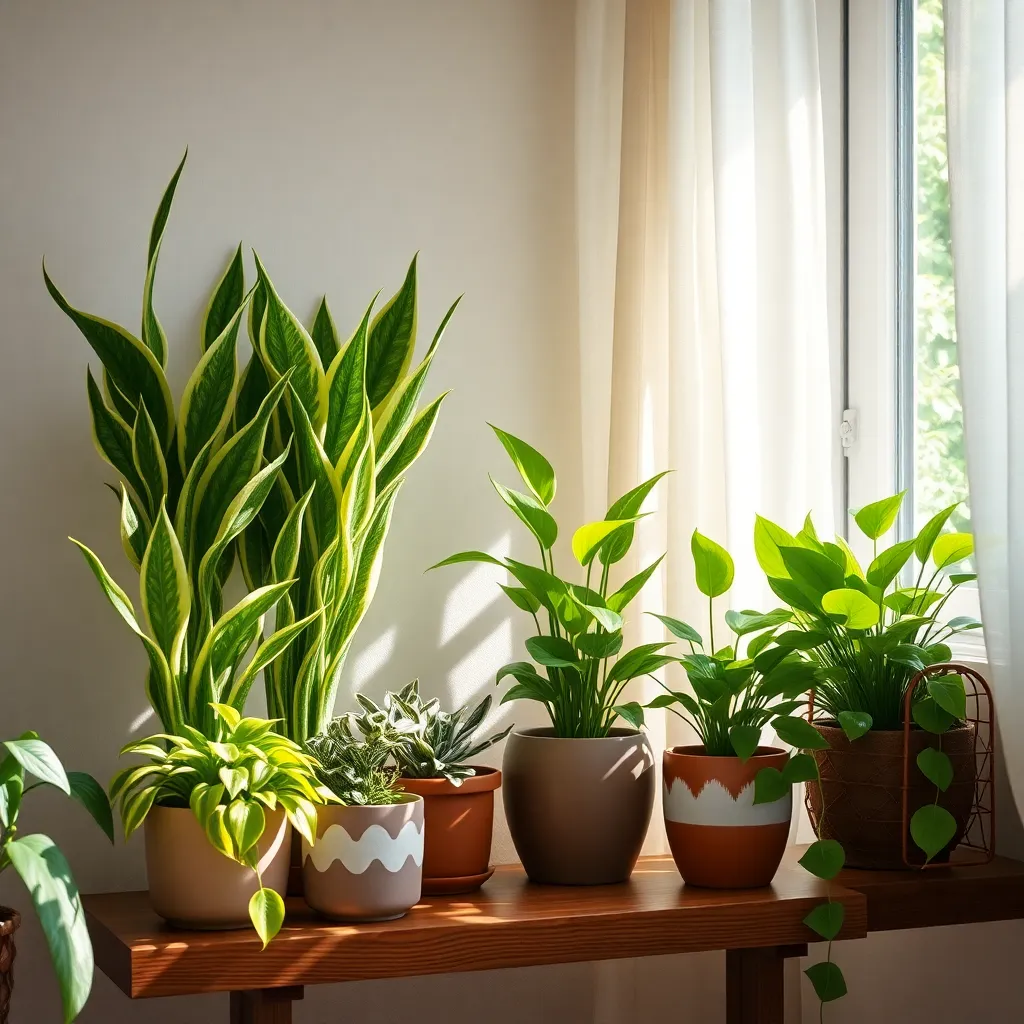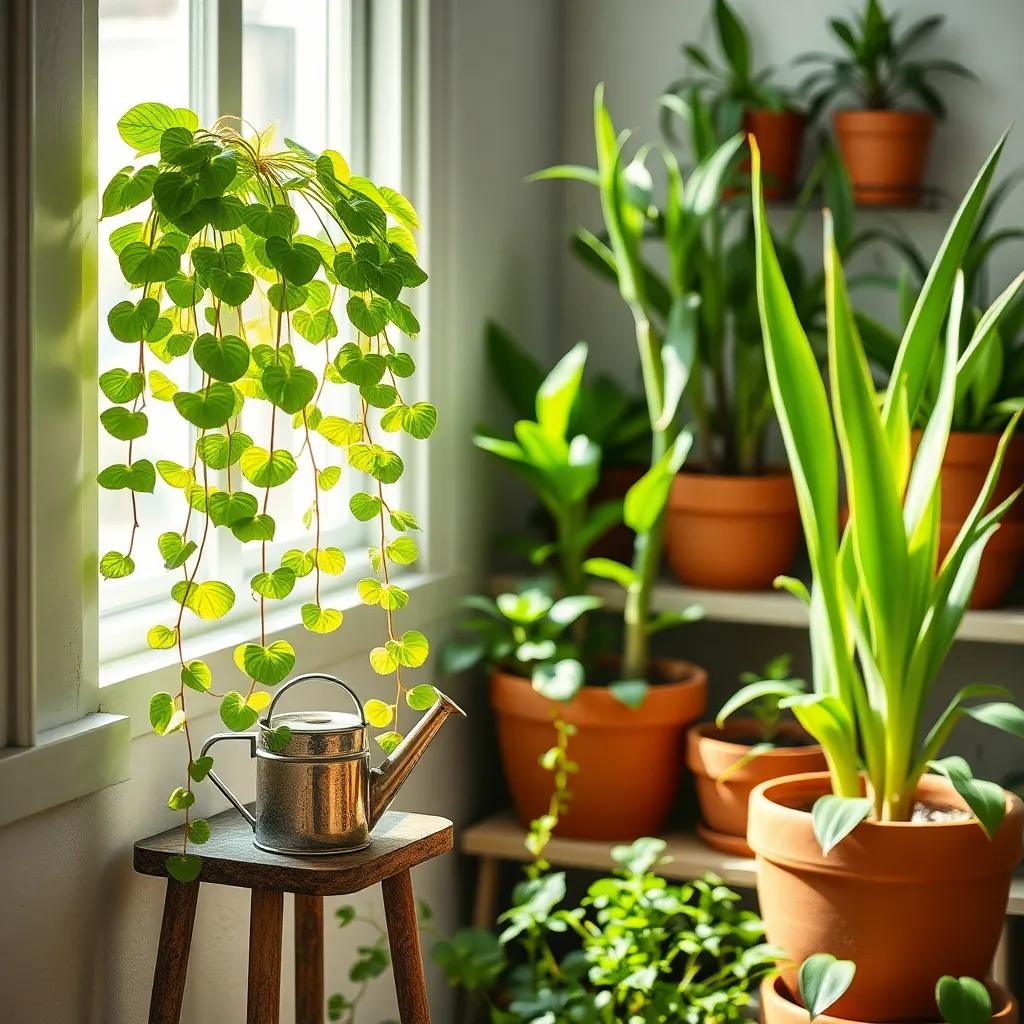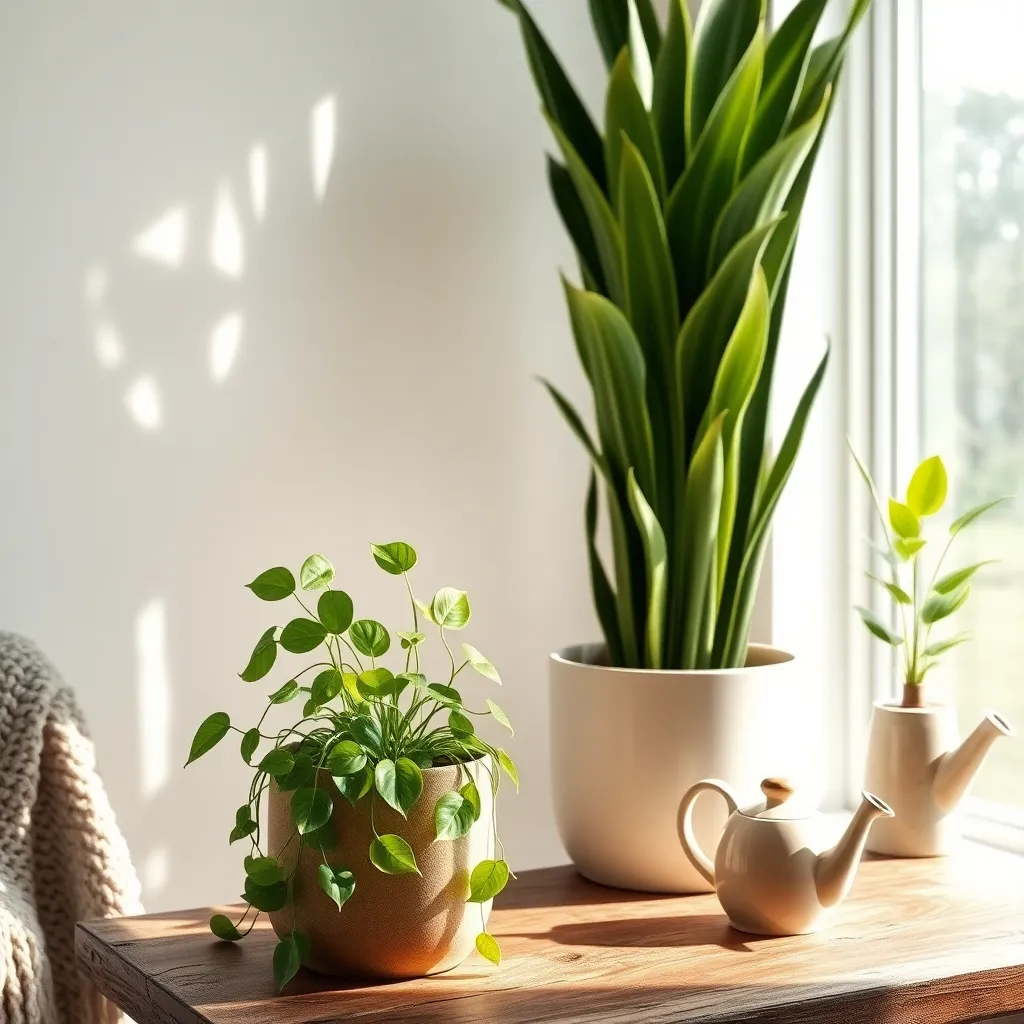In the hustle and bustle of our daily lives, it’s easy to overlook the simple joys that houseplants can bring to our homes. Whether you’re a seasoned gardener or just beginning to explore the world of greenery, incorporating easy-to-care-for houseplants into your living spaces can offer a refreshing touch of nature without demanding too much of your time or effort.
For those who cherish the idea of a lively, green home but worry about the upkeep, you’re in the right place. This article will guide you through a selection of resilient plants that thrive even in the hands of the busiest individuals. You’ll discover the perfect companions that require minimal attention while still rewarding you with vibrant foliage and cleaner air.
Our journey will delve into the specific needs of these low-maintenance gems, ensuring that even the most novice gardeners can feel confident in their plant parenting skills. From understanding light preferences to mastering the art of watering, you’ll gain practical tips that make plant care feel straightforward and rewarding. Get ready to transform your home into a verdant sanctuary with ease, as we explore the world of houseplants designed for those who love plants but live on a tight schedule.
Choosing Low-Maintenance Houseplants

When selecting low-maintenance houseplants, consider those that thrive in a variety of light conditions and require minimal watering. Plants like the snake plant or ZZ plant are excellent choices, as they are both resilient and adaptable to different environments.
Light is a crucial factor in ensuring your houseplants flourish with minimal effort. Choose plants that can tolerate low-light conditions, such as pothos and philodendrons, which are known for their ability to thrive even in dimly lit rooms.
Watering can often be a challenge for busy individuals, but there are plants that practically thrive on neglect. Opt for succulents like aloe vera or jade plants, which store water in their leaves, allowing them to survive with infrequent watering.
Soil selection plays a vital role in plant health, particularly for low-maintenance varieties. Use a well-draining potting mix, such as a cactus blend for succulents, to prevent root rot and support robust growth.
Advanced gardeners can experiment with self-watering pots to further reduce plant care tasks. These pots are designed to provide a consistent moisture level to the plants, making them ideal for those who travel frequently or have a busy schedule.
Top Plants for Busy Lifestyles

For those with busy lifestyles, selecting the right houseplants can make all the difference. Snake plants, also known as Sansevieria, are an excellent choice as they thrive on neglect and require watering only every few weeks.
Thriving in various lighting conditions, snake plants are forgiving of both low light and direct sunlight. Use well-draining potting soil to prevent root rot, and ensure pots have drainage holes to maintain plant health.
Another hardy plant is the ZZ plant, known for its ability to tolerate low light and infrequent watering. Water it only when the soil has completely dried out, which might be just once a month, making it ideal for forgetful plant owners.
ZZ plants prefer indirect light but can survive in low-light environments, making them suitable for almost any room. When repotting, choose a potting mix that contains perlite or sand to ensure good drainage and aeration.
For a splash of color, consider the Pothos plant, which is highly adaptable and easy to propagate. Pothos can grow in a range of lighting from low to bright indirect light, and they need watering only when the top inch of soil feels dry.
To encourage fuller growth, occasionally prune Pothos stems, and use a balanced liquid fertilizer during the growing season. These plants can also be grown hydroponically, providing a unique and low-maintenance option for plant enthusiasts.
Simple Watering Tips and Tricks

Watering your houseplants effectively is crucial, especially if your time is limited. Always check the soil moisture level before watering by inserting your finger about an inch deep into the soil; if it feels dry, it’s time to water.
Instead of watering on a strict schedule, observe your plants and their environment. Humidity, temperature, and light conditions can affect how quickly the soil dries out, so adjust your watering routine accordingly.
For a quick and easy watering solution, consider using self-watering pots or adding a layer of mulch on top of the soil. This technique helps to maintain moisture levels and reduces the frequency of watering, which is perfect for busy individuals.
Make use of a watering can with a long spout for precise watering at the base of your plants. Watering the leaves can lead to fungal issues, so aim to keep the foliage dry, which is especially important in less ventilated indoor environments.
If you’re growing succulents or cacti, remember that these plants prefer a “soak and dry” method. Allow the soil to completely dry out between waterings, as overwatering is a common mistake that can lead to root rot in these drought-tolerant plants.
For those with a collection of different plant types, grouping plants with similar water needs can simplify your care routine. This way, you can water multiple plants at once without worrying about over or under-watering any specific one.
Ideal Lighting for Easy Growth

Understanding the lighting needs of your houseplants can make a significant difference in their growth. Most easy-to-care houseplants thrive in bright, indirect light, making them perfect for rooms with filtered sunlight.
Place your plants near windows that receive plenty of light but are shielded by curtains or blinds. This setup mimics their natural habitat under the canopy of trees, where they get diffused sunlight.
For homes with fewer sunny spots, consider using artificial grow lights to supplement natural light. LED grow lights are energy-efficient and can be tailored to provide the spectrum most beneficial for your plants.
If you’re new to using grow lights, start by positioning them about 12 inches above the plant. Generally, aim for 12-16 hours of artificial light a day to ensure your houseplants get the energy they need to thrive.
Effortless Care and Maintenance

Caring for houseplants can be simplified with a few basic routines that fit into any busy schedule. One of the easiest ways to ensure plant health is to establish a consistent watering schedule, taking into account that most indoor plants prefer the soil to dry out slightly between waterings.
When it comes to watering, a general rule of thumb is to check the top inch of soil; if it feels dry, it’s time to water. For plants like the snake plant or ZZ plant, which are drought-tolerant, you can water less frequently, about every two to three weeks.
Proper soil choice is another essential factor for effortless care. For most houseplants, use a well-draining potting mix, such as a blend of peat moss, perlite, and vermiculite, which helps prevent overwatering by allowing excess water to escape.
Feeding your plants doesn’t have to be complicated either. Apply a balanced liquid fertilizer at half strength every month during the growing season, typically from spring through early fall, to ensure they receive the nutrients they need without overwhelming them.
Regular maintenance, like dusting leaves, not only keeps your plants looking their best but also improves their ability to photosynthesize. Gently wipe leaves with a damp cloth or give them a shower in the sink or bathtub every few months to keep them clean and healthy.
Conclusion: Growing Success with These Plants
In exploring the vibrant world of easy-to-care houseplants, we’ve uncovered five key relationship concepts: nurturing growth with minimal effort, the importance of environment, the power of patience, creating a shared space of beauty, and the joy of small victories. Each of these principles not only aids your green thumb but also enriches your personal relationships by emphasizing care, understanding, and mutual flourishing.
As a next step, choose one plant from our list and introduce it into your home. Let it be a daily reminder of the simple yet profound care that relationships require. Observe how tending to it parallels tending to the bonds you hold dear.
Don’t forget to bookmark this article as your go-to guide for both plant care and relationship insights. By doing so, you have a ready resource to revisit whenever you need a boost of encouragement or a reminder of how small actions can lead to thriving connections.
Remember, the seeds of your relationship success are sown in the little actions you take today. With each nurturing gesture, you’re not just growing a plant; you’re cultivating a lasting, healthy relationship. Here’s to a future where your relationships bloom as beautifully as your plants!

